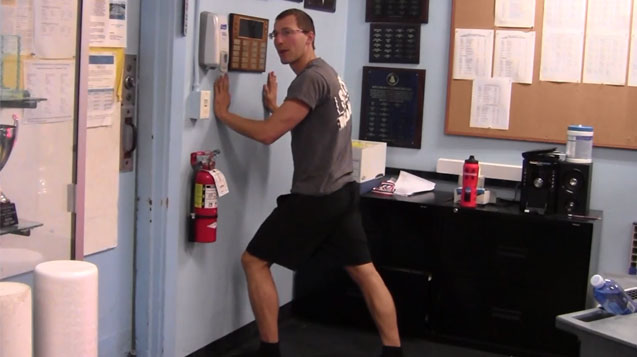Science of Performance: How to Improve Cramps

By Dr. G. John Mullen, PT, DPT, CSCS of Swimming Science, Owner of COR PT , Creator of Swimmer’s Shoulder System, Swimming Science Research Review, Swimming Troubleshooting System , and Mobility for Swimmers System , Swimming World correspondent
SANTA CLARA, California, June 20. FREQUENT toe pointing causes frequent calf cramping in swimming. I’ve recently discussed the cause of cramps, arguing against the nutrition or hydration hypothesis. Instead, current research suggest the main cause of cramps is fatigue.
Nonetheless, pushing one’s limits of fatigue is mandatory for any sport, especially swimming. Therefore, cramps will occur in overworked areas. The calves, specifically the gastrocnemius, is particularly prone to cramping as it crosses two joints. As the gastrocnuemius crosses two joints, it becomes responsible for more actions, increasing fatigue. If you have a cramp during practice, try these two things:
1) Calf stretching (1-2 minutes): I’m not a large advocate of static stretching, but it seems stretching breaks the cycle of an overloaded cramped muscle. Remember, the calf is composed of two muscles, so make sure you stretch both! Also, during the stretching, block ankle pronation, a common way for negating a stretch.
2) Calf Self-Myofascial Release (2-3 minutes): Self-myofascial releases (SMR) are believed to break down overactive fascia in surrounding the muscle. SMR does a lot of great things, requiring more research and support. In the meantime, if you have a cramp, try getting out of the water and rolling a lacrosse ball or baseball under the upper outside portion of the calf. This is the “trigger point,” providing the biggest bang for your buck.
These remedies only resolve an existing problem. Long-term prevention of cramping is only possible with properly progressed training volume and intensity. However, complete resolution of cramping is not possible, as cramping also has a genetic component. Since we can’t change your genes, progress training load and intensity safely, but have a few tools for alleviating cramping in your tool box, as cramps will undoubtedly occur!
Dr. G. John Mullen received his Doctorate in Physical Therapy from the University of Southern California and a Bachelor of Science of Health from Purdue University. He is the owner of COR PT, strength and conditioning consultant, creator of the?Swimmer’s Shoulder System, and chief editor of the?Swimming Science Research Review.



